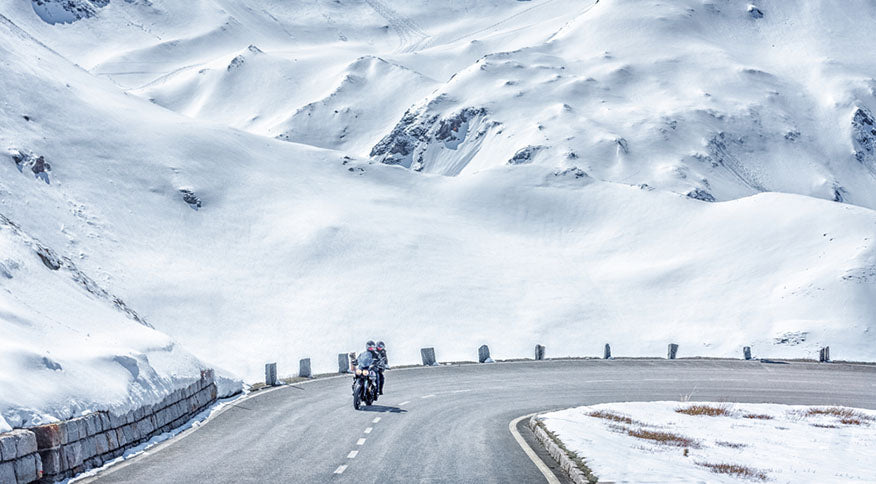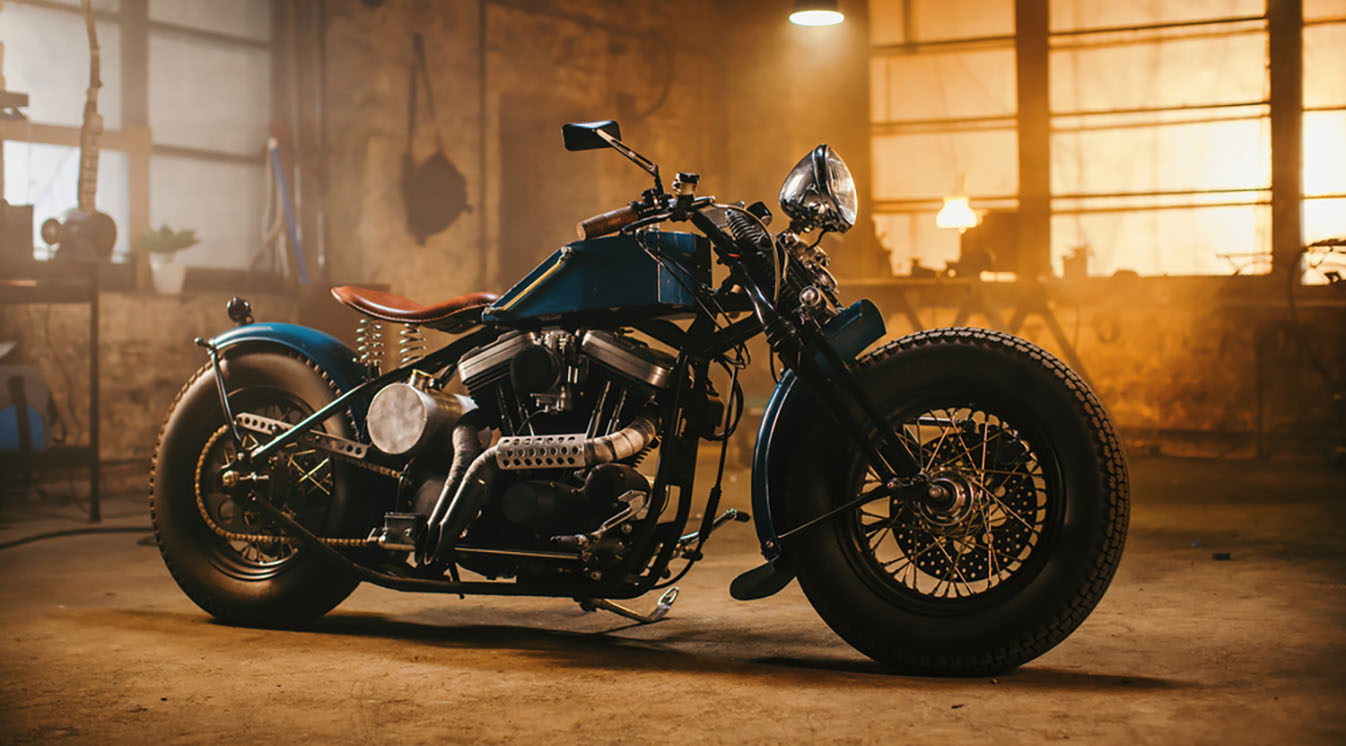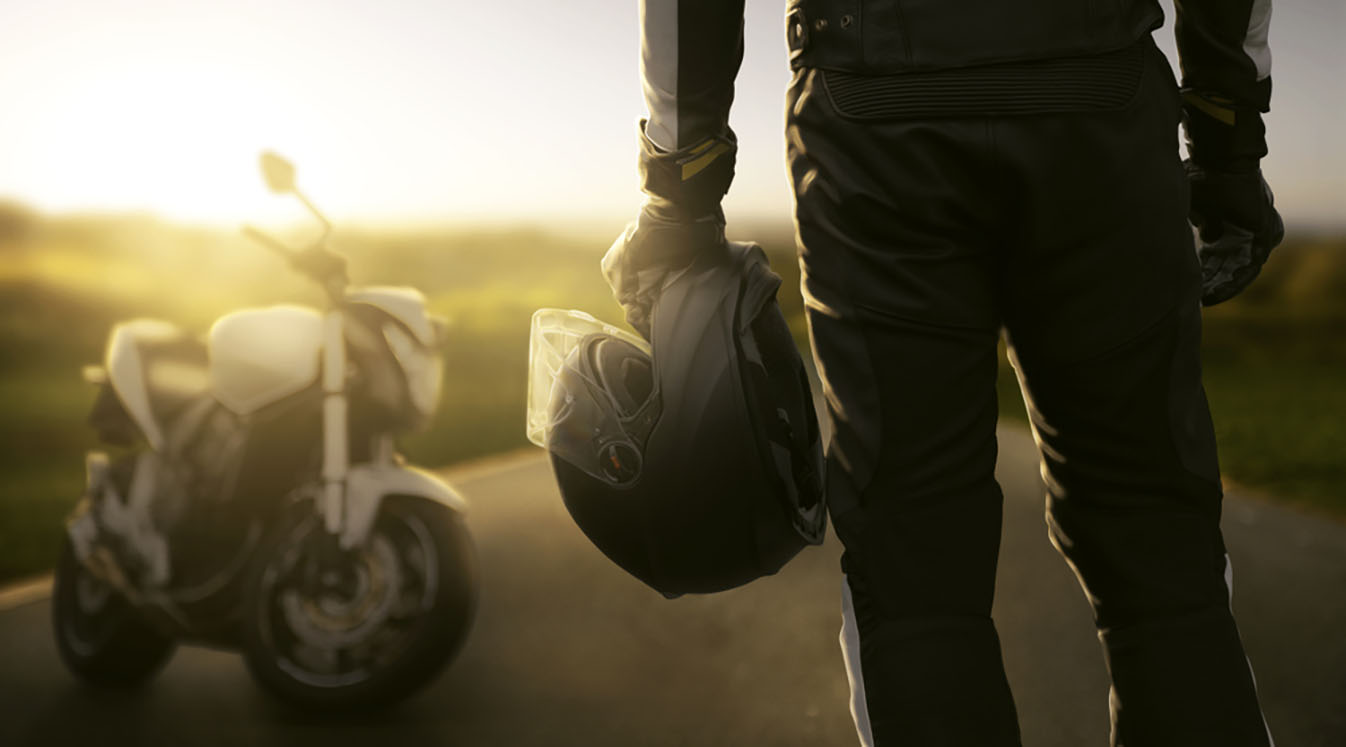As they say in a certain famous TV show, winter is coming. Depending on when and where you’re reading this, winter might already be here, and that means that motorcyclists around the world are grudgingly putting away their bikes and waiting for spring.
Is it too difficult to bear the thought of your bike sitting unused in the garage until the trees have leaves again? For many people, riding is an all-year passion that never takes a break. Conventional wisdom says that you shouldn’t ride in the winter, but for many people who truly love riding, that’s all the more incentive to get back behind the bars.
So, if you’ve decided that you want to ride in the winter, you need to know how winter riding is different and what you’ll need to do to keep yourself safe.
Cardo Systems is a passionate team of motorcycle lovers from around the world, and we love to spread our knowledge to the riding world—so we’ve got this handy guide to winter gear, technique and bike care to take you through the coldest months on the road.
What’s Different About Riding a Motorcycle in Winter?
Winter riding is different in many ways besides just feeling colder (though it definitely is that.) There are all kinds of considerations you’ll need to think about in terms of how you approach riding and outfit yourself.
The physics of cold air, snow, ice, sleet and other winter weather conditions will have major effects on the performance of both your bike and your body. It’s your responsibility to know what you can expect from winter conditions and be ready to respond to them. Some of the problems you might encounter include:
- Riding at high speeds during the winter is cold—like, really cold. A wintertime highway ride will chill you to the bone faster than you’d ever believe possible thanks to the brutal wind and the relative lack of full-body movement to warm you up. That means that dangerous cold-weather conditions like hypothermia and frostbite can come into play if you haven’t insulated yourself properly.
- The rubber in your tires will shrink, decreasing their ability to grip the road. Your tires will warm up as you ride, but it’s not smart to rely on this (especially since they’ll cool right back down if you stop moving). If your tires don’t have enough tread, you’ll have even less traction. Lack of traction also means longer stopping distances, both for you and for other vehicles on the road.
- Weather conditions like snow and ice can make traction even worse and decrease visibility as well. Even if you’re not planning to ride in these conditions, we all know that they can pop up when least expected.
- You’ll start to lose dexterity in your fingers and toes as your body rushes to conserve heat for your vital organs. That means less agility when you’re working the brakes and throttle and slower reaction times when you need your reflexes to be at their quickest.
Put these things together and you’ll get the picture: A bike is harder to control in the winter, and your body is less able to handle the conditions. The solution to these problems is a mixture of gearing up and adjusting your riding and mindset to the conditions.
Dressing for Winter Riding
“All the gear, all the time,” as they say—and if your “all the time” includes riding in the winter, “all the gear” is often going to mean taking the extra steps to bundle up. When it comes to your winter riding outfit, the word is “insulation,” and lots of it. The more insulation you can get around your body, the better protected you’ll be from the cold.
When trying on winter riding gear, you’re looking for a fit that’s snug, but not overly tight. You want some breathability and room for air to circulate, as well as clothing that you can layer. Speaking of layering, it’s the single easiest and best way to protect yourself from the cold when riding in the winter. Start with a moisture-wicking base layer, add your main insulation layer in the middle and put a waterproof outer shell layer on top (preferably also insulated). It’s easy to just throw your layers on once you’ve got a few of them in your wardrobe. If you get too hot while riding, make a stop and throw your top layer in your saddlebags or motorcycle backpack.
We also can’t emphasize enough how important it is to have waterproof gear in the winter. You may not plan on riding in the snow or rain, but you may get caught in it against your will—and you really don’t want to have a cold, soaking-wet body in that situation. Whenever possible, look for gear that’s waterproof or at least water-resistant.
Full-face and flip-up helmets, known for getting hot in the summer, shine in the wintertime. If you typically wear an open-face helmet for warm-weather riding, winter is a great time to go for a more protective model. (Side note: Full-face helmets offer much better protection in any month of the year.) Remember to grab a neck warmer, too, because the gap between your jacket and helmet is one of the easiest places for the cold to sneak its insidious little fingers in.
It should go without saying that functionality needs to always come before looks when choosing gear. But it’s especially important in the winter when a lot of the gear looks a little bulky and awkward but is totally necessary for real protection. If you’re going to ride in the winter, accept that the safest and best gear might make you look a little bit like the Abominable Snowman and get on with the riding.
Other Winter Riding Gear
Riding safely in the winter means packing the whole kit. Here are some other items to pack in your winter bag that range from handy to genuine lifesavers:
- Hand Warmers: These small and inexpensive packets are highly effective for keeping your hands toasty for wintertime rides. It’s as easy as slipping a warmer packet into your gloves before you head out, and most offer enough heating power for several hours of riding.
- Heated Handlebars/Heated Seat: If you’re planning on doing long rides in the cold, these will keep you comfortable on a level that warm clothes and hand warmers won’t. They’re surprisingly inexpensive and simple to install, and they can make all the difference when you’re in it for the long haul.
- Snacks and Water: Your body burns more calories in the winter just trying to stay warm, and you’re vulnerable to dehydration as well. Keep yourself feeling great and at your most alert while you’re riding by carrying some simple, nutritious snacks like beef jerky or nuts, plus a reusable water bottle.
- Helmet Communications System: A waterproof motorcycle Bluetooth headset that attaches to your helmet is the perfect way to stay in touch while you’re out for a winter ride. These voice-activated motorcycle communication headsets give you a key lifeline to the outside world when you’re riding and make it easy to manage your communications completely hands-free so you don’t have to fumble with buttons in the cold.
Important Riding Techniques for Winter
First off, know that winter riding isn’t generally recommended for beginners. If you’ve been riding for less than a year, it’s usually a good idea to build up your skills first before tackling the challenges of winter riding.
If you’re confident that you’re ready to hit the road and brave the cold, know these techniques and practice them before you take your first winter ride. They just might save your life.
- Improve your tires’ traction by getting them warmed up before you take a ride. Different riders recommend different ways to warm up your tires, so try a few and choose the one that works for you–even if it’s just taking a few laps around the neighborhood before getting on the road.
- Increase the following distance that you give to other vehicles, since both they and you will likely have longer stopping distances in the winter.
- Recognize that in winter weather conditions, drivers will be even more distracted and less able to see you than normal. By the same token, conditions like snow and sleet will seriously cut down your vision, too, so make sure to stay even more keenly aware of your blind spots.
- Get familiar with some techniques for snow and ice riding. Riding on snow and ice is a whole different animal from typical winter riding and has its own set of techniques that borrows a lot from dirt skills. Even if you don’t plan on seeking out snow and ice to ride on (and most people shouldn’t), these skills can save your life if you get caught in a snowstorm or hit a patch of ice unexpectedly.
- Resist the urge to panic if you find yourself in some wild weather. The smartest move you can make in adverse weather conditions is to acknowledge when you’re out of your depth and ride calmly, slowly and carefully to the nearest place where you can get some shelter and wait out the storm.
One thought about bike selection: If you have a dual-sport or adventure bike, winter can be the perfect opportunity to bust it out and have some fun. An adventure bike with a good pair of tires can handle cold and even snowy conditions better than just about any other kind of motorcycle. And should you end up laying down your bike on a patch of ice, an adventure bike is better able to take the hit than a sport or touring bike.
Group Rides in Wintertime
Riding in a group is always a great way to explore the road with your favorite people, and taking in some breathtaking wintertime vistas together is an experience you’ll never forget. But riding in a group is also a great way to make winter riding safer, since you’ll have more help if you need it, more eyes on the road and increased visibility to other motorists.
Remember that the usual etiquette of group riding applies. That’s especially true for the number one rule: Ride your own ride. Chasing another rider who passes you or trying to keep up with riders who are far ahead of your skill level will only get you into situations you’re not ready for—and the consequences are all magnified during the winter.
For a winter group ride that’s safe and fun for everyone, it’s a great idea to grab some motorcycle headset communicators like the Cardo Packtalk Pro, Cardo Packtalk Edge or Cardo Freecom 4x. Our state-of-the-art wireless communicators attach easily to your helmet and make it a snap to talk to your fellow riders, answer phone calls or even stream music from your smartphone with simple voice commands.
Winter Motorcycle Maintenance Tips
Winter can also be hard on a motorcycle itself, so don’t forget to take your bike’s maintenance needs into account.
- Road salt is just as corrosive to bikes as it is to cars, so make sure to give your bike a thorough hose-down after any ride in snowy conditions where roads have been salted. Remember that salt can stay on roads and in standing water for weeks after it snows.
- Check your bike’s tire pressure frequently in the winter. Tires lose pressure easily in the cold, and the last thing you want on a winter road is to be running at less than your recommended PSI.
- Make sure you’ve got the appropriate tires on your bike for the winter. True motorcycle snow tires are rare, so as long as you don’t regularly see yourself riding on actual snow, a good pair of all-weather tires should be sufficient. What you don’t want is ultra-sticky racing tires or any tire with worn-down tread.
- If you’re putting your bike away for the winter, make sure to get it ready for storage so that you can quickly get it back to full performance in the spring. Store your bike inside if possible or get a good cover for it, use a battery tender to keep your battery healthy and give the bike a good cleaning before putting it to bed.
The adventure of riding never ends, and a dedicated rider can make it through the winter just fine with some preparation and a willingness to live a little bit on the edge. Cardo Systems is all about helping you take the risks of riding in a smarter, safer and more connected way. So if your passion for riding is telling you that it’s not quite time to put the bike away yet, bundle up, grab your buddies, fire up your helmet communications system and show the world that you can stay cooler than it can.





